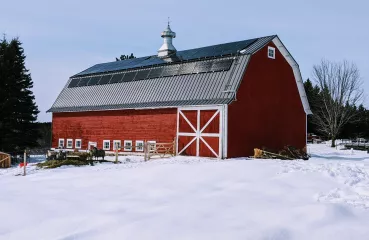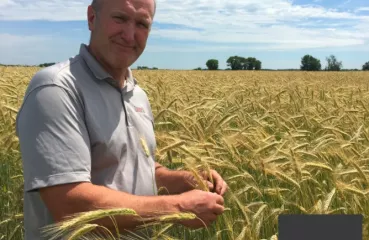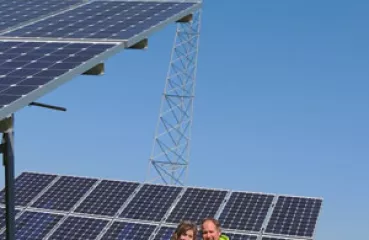The solar installation is divided into two 40 kW systems across 12 dual-axis trackers, which allows the farm to receive the net metering retail price when they produce more electricity than they use. While Matt Heers thinks the trackers "are kind of cool to watch as they move during the day," he notes that "the real benefit is that the solar panels lock in our electricity costs for the future." Bob confirms that the farm used to pay about $17,000 a year in electrical costs, but with the PV systems they now have a net energy income of around $1,500 per year.
The arrays are dual-axis trackers, which means they follow the path of the sun during the day, both vertically and horizontally, to maximize the electrical output. When asked about maintenance, Matt said that they were once called by the monitoring company to turn the trackers on and off, and once during a heavy snow they had to shovel snow from around the bottom edge of several of the units.





